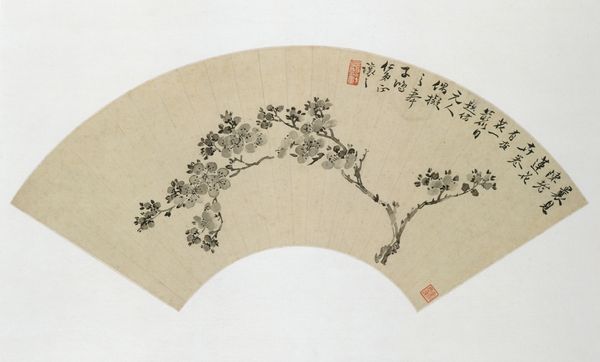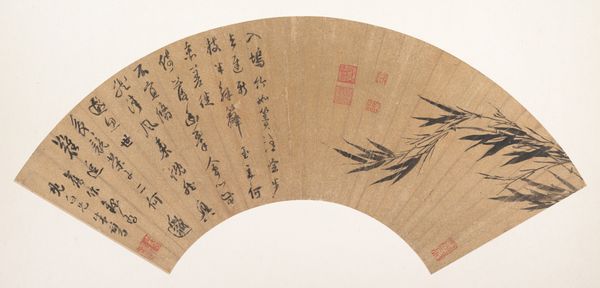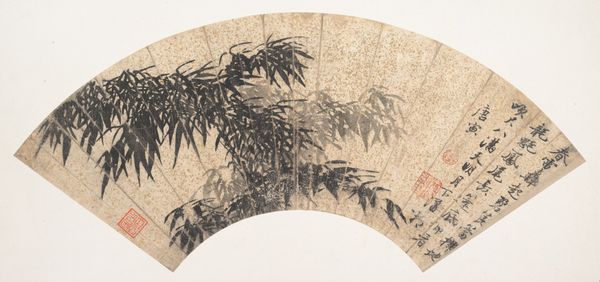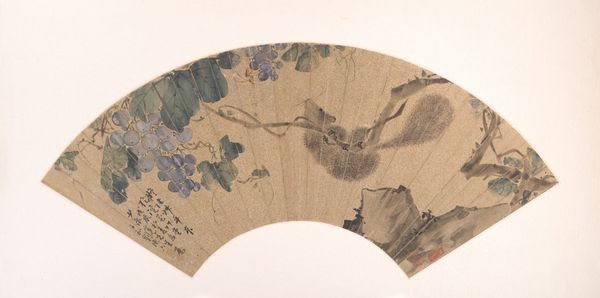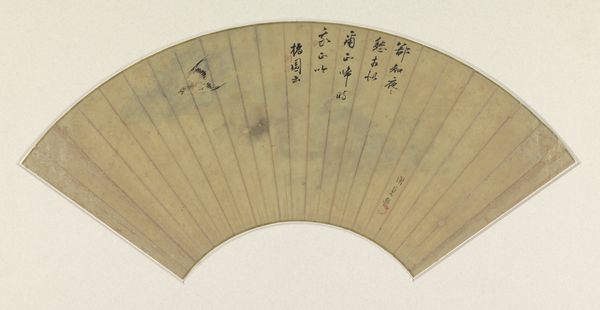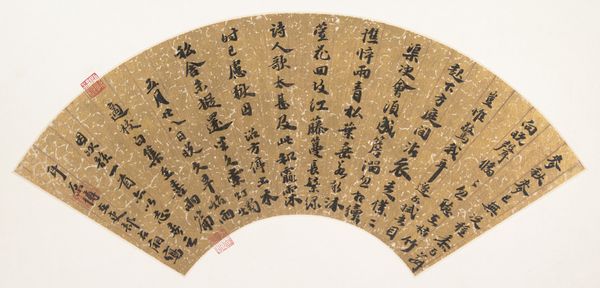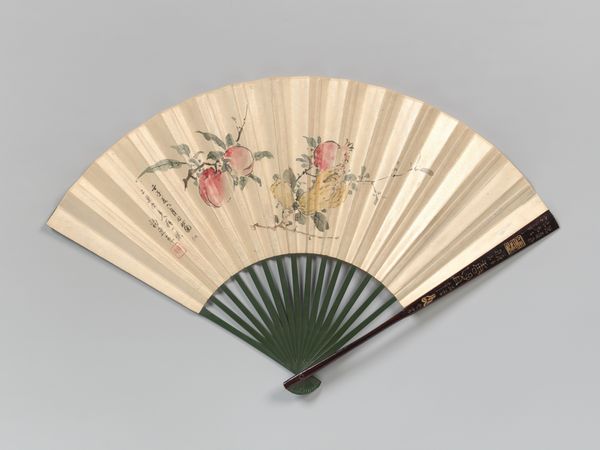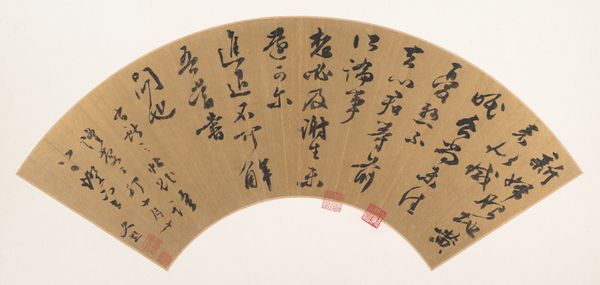
painting, paper, ink
#
pottery
#
painting
#
asian-art
#
paper
#
ink
#
plant
#
ceramic
#
decorative art
Dimensions: Image: 9 7/16 × 20 5/8 in. (24 × 52.4 cm)
Copyright: Public Domain
Suzuki Kiitsu created “Bush Clover” with ink and color on paper in the 19th century. Kiitsu lived during the late Edo period, a time of social and economic change in Japan, where the merchant class was rising in influence. Originally a textile designer, Kiitsu’s art departs from traditional representations by bringing a flair for decorative design to traditional Japanese painting. His background and interest in decorative design are visible in the way that Kiitsu has arranged the bush clover leaves in a pattern. In Japanese culture, plants and flowers often carry symbolic meanings. Bush clover, or “hagi,” is associated with autumn, a season that evokes themes of transience, reflection, and nostalgia. The fan shape itself furthers this sense of the ephemeral, as fans were functional items that were also often used in dance and theater performances, hinting at fleeting moments. Kiitsu's artistic journey reflects the era's shifting cultural landscape, and, through this lens, we can see how individual expression intertwines with historical context.
Comments
No comments
Be the first to comment and join the conversation on the ultimate creative platform.
